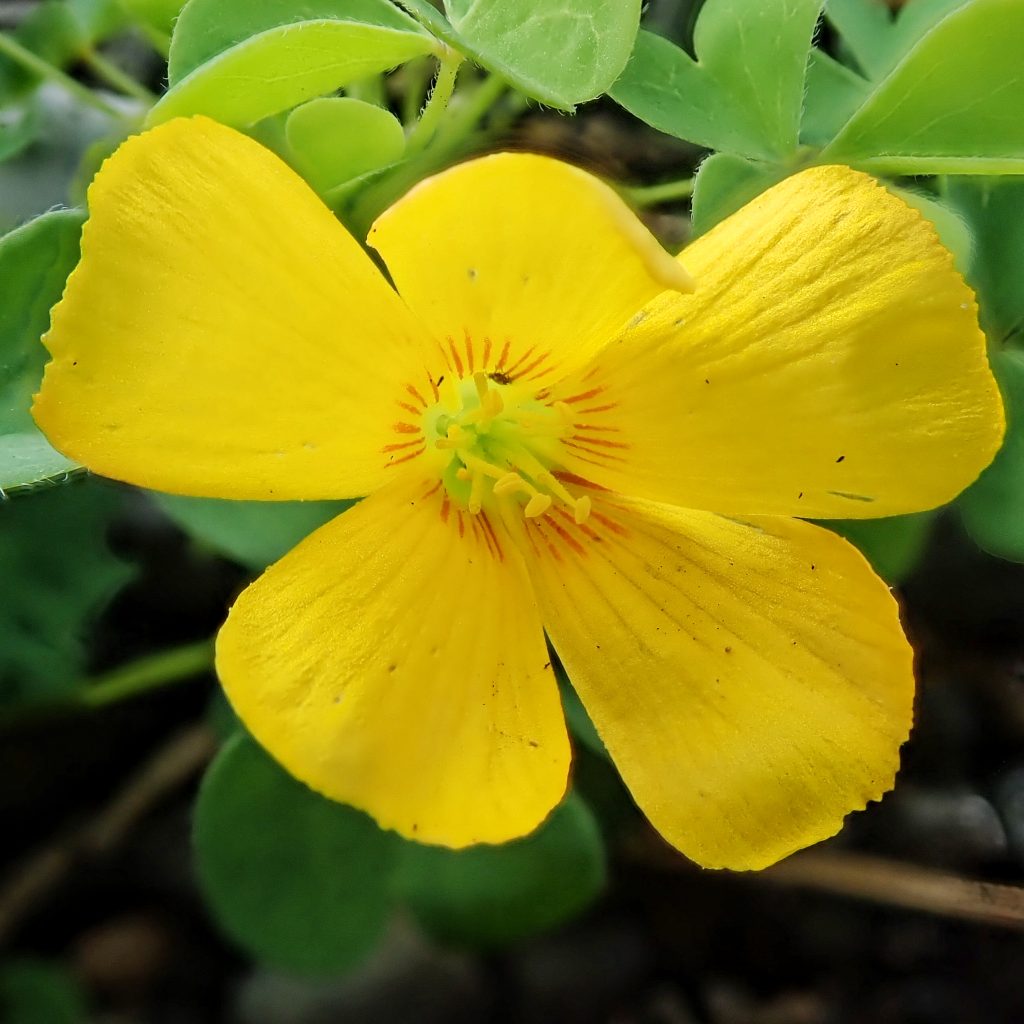
One of the more personally exciting finds on my first trip to explore the resurrection of the landscape ravaged by the Holiday Farm fire was this Oxalis suksdorfi, also known as yellow western woodsorrel, Suksdorf’s woodsorrel, and western yellow oxalis. This was the first time I have found this pretty little plant, since it is rare (and considered threatened) in Washington state, where I have historically done most of my woods tromping.
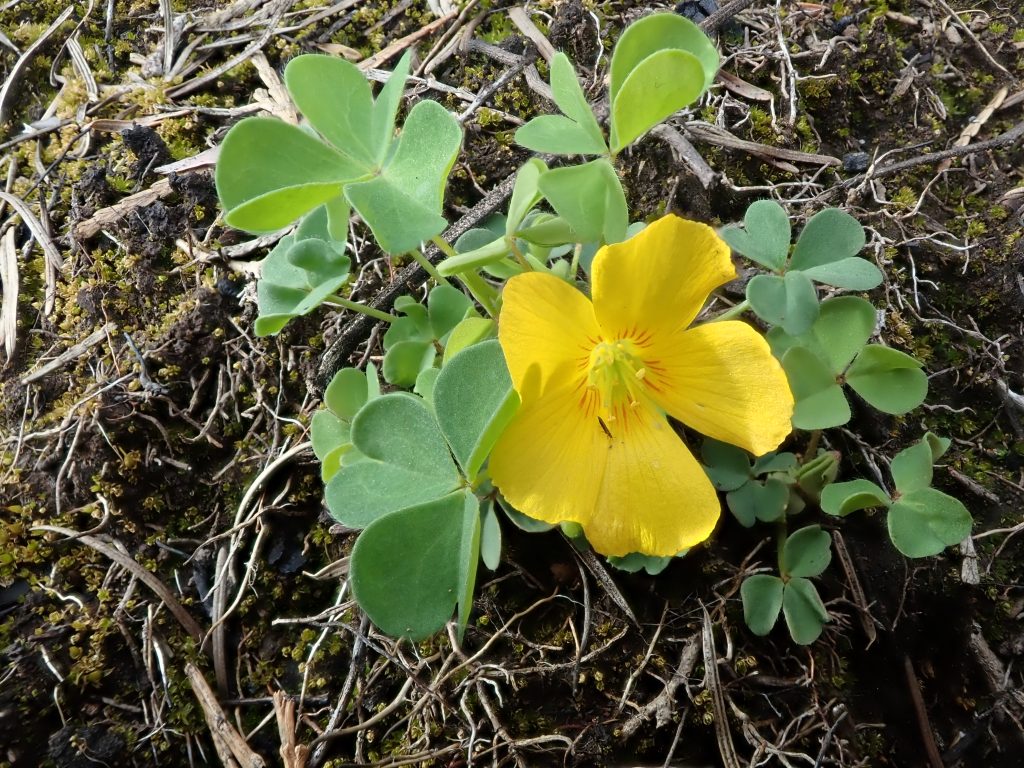
It wasn’t exactly common in the areas we explored, but when we did find a patch there were usually a few plants nearby. The leaves aren’t as large as Oxalis oregana, and it doesn’t seem to form carpets like that species, so it’s possible that the reason I hadn’t found any before was that it was obscured by other plants. Plus, being diurnal, the flowers tend to remain closed until there is good light.
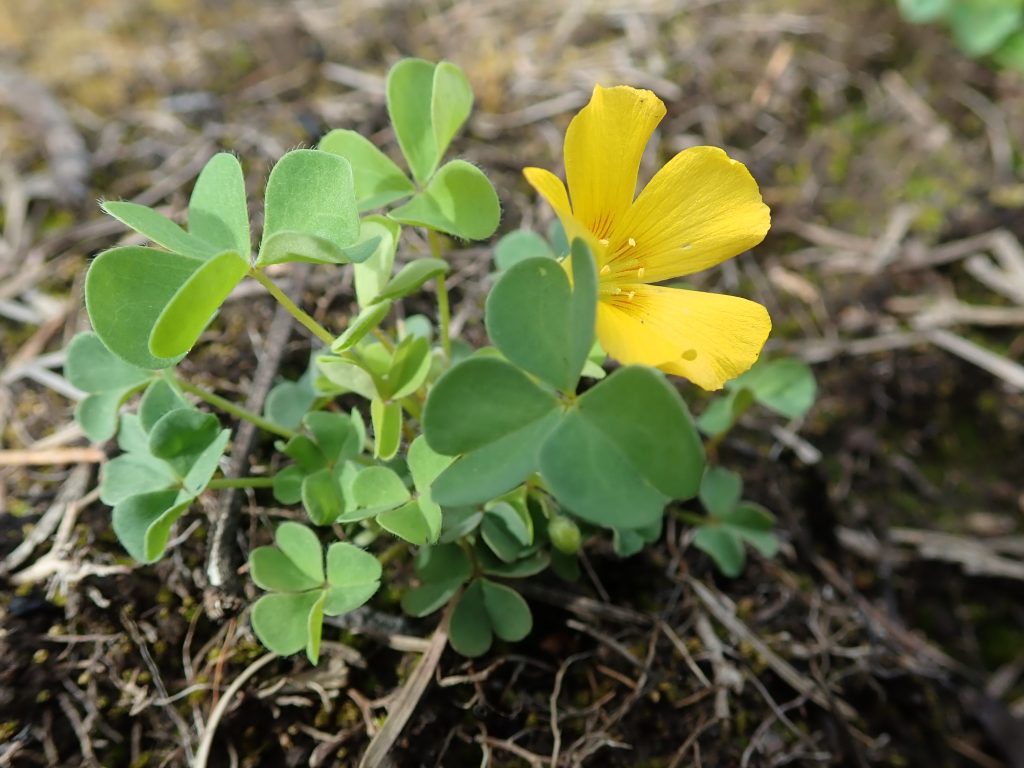
The flowers are tristylous, with 3 different morphs. This usually evolves to limit, but not eliminate, self fertilization, with the various morphs having different degrees of self-incompatibility. It is interesting to note that the mid-styled morph contributes few seeds or pollen, and may either be being selected against by natural forces, or be moving towards less self-incompatibility in favor of production over genetic diversity.
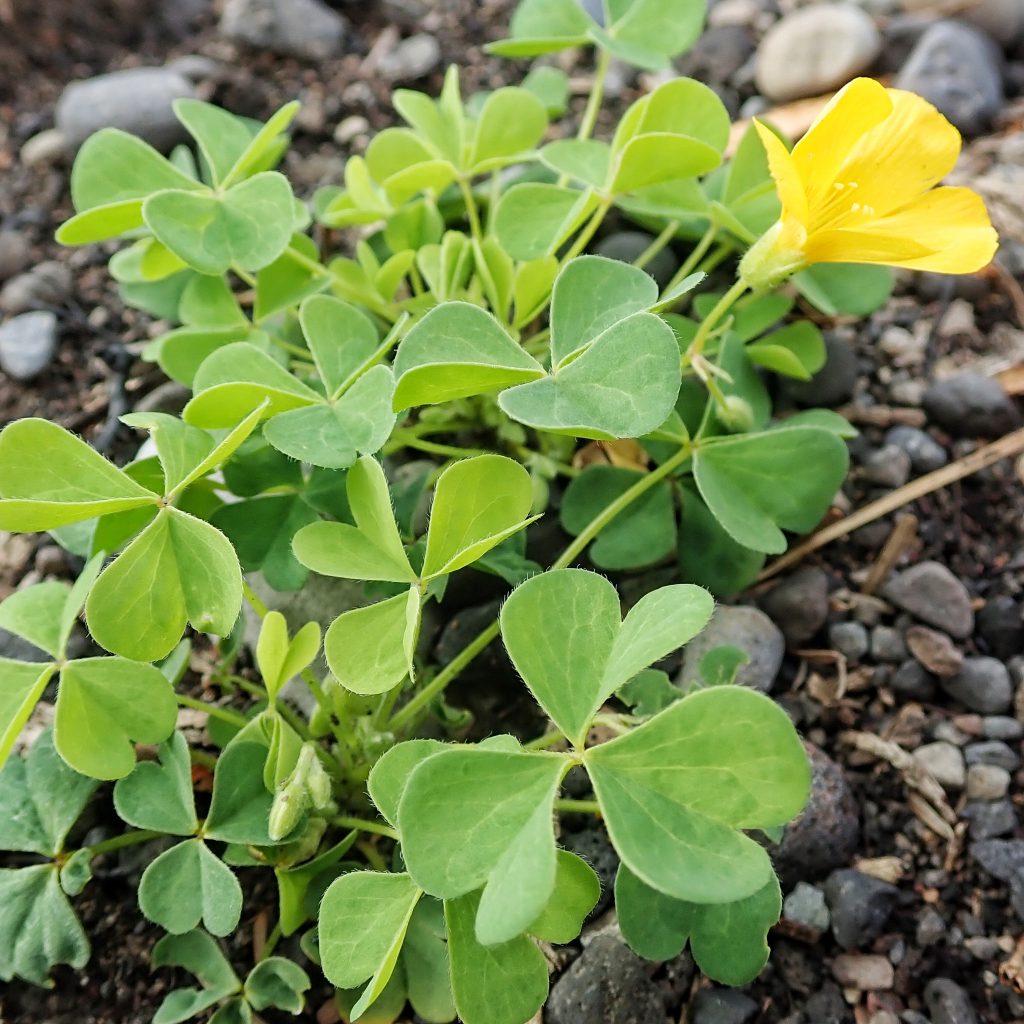
Description-Low growing (up to 12” tall), trailing, perennial with with tripartite, clover like leaflets and medium sized yellow flowers; leaflets are lobed; flower petals are 12-20mm long, and usually have orange lines near the throat; inflorescence usually with one, but up to 3 flowers.
Similar species– Other yellow flowered Oxalis have much smaller and more numerous flowers.
Habitat-Moist forests, and mesic to dry, open woods, at low elevations.
Range-West Coast endemic; found west of the Cascades and in nw California; relatively common in Oregon, rare in Washington.
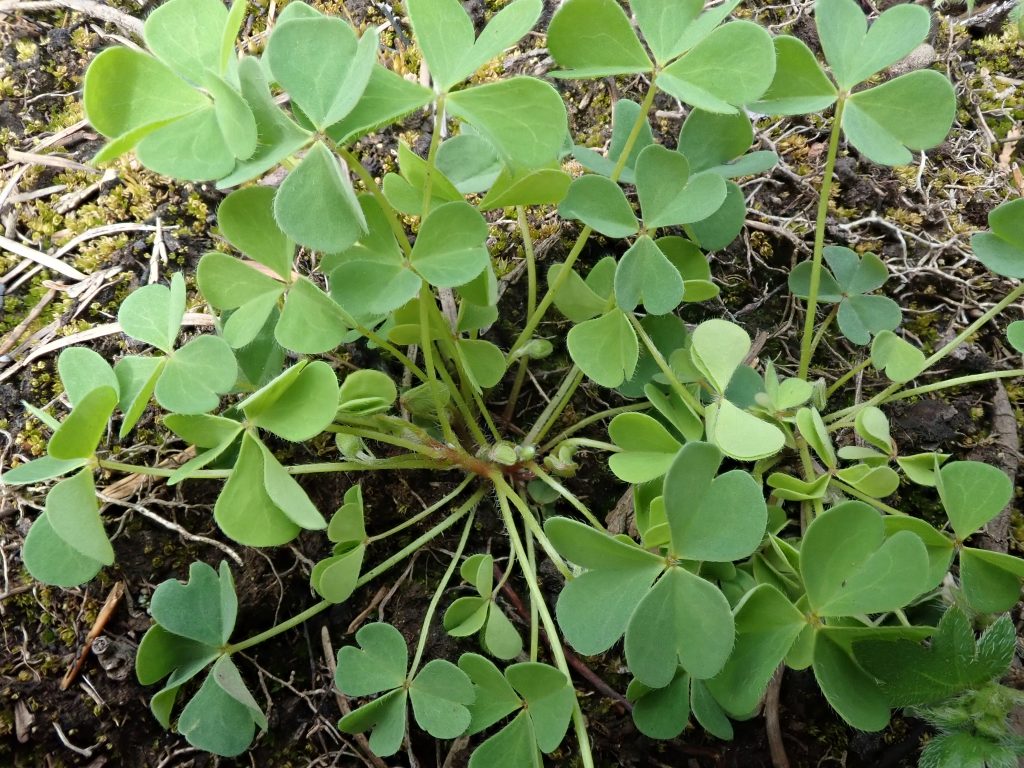
Reproductive timing-Blooms April to August
Eaten by– This plant is a larval host for the moth Galgula partita; I couldn’t find any ethnobotany specific to this species, but it is probably similar to Oxalis oregana.
Etymology of names–Oxalis is from the Greek for ‘being sour/sharp’ and refers to the acidic taste of the juice of the plant. The specific epithet sukdorfii honors Wilhelm Suksdorf (1850-1932), a self taught and yet world renowned botanist from Bingen, Washington, who collected extensively in the PNW from 1876-1929. During his life he collected around 150,000 specimens, of which 374 were new to botanical science.
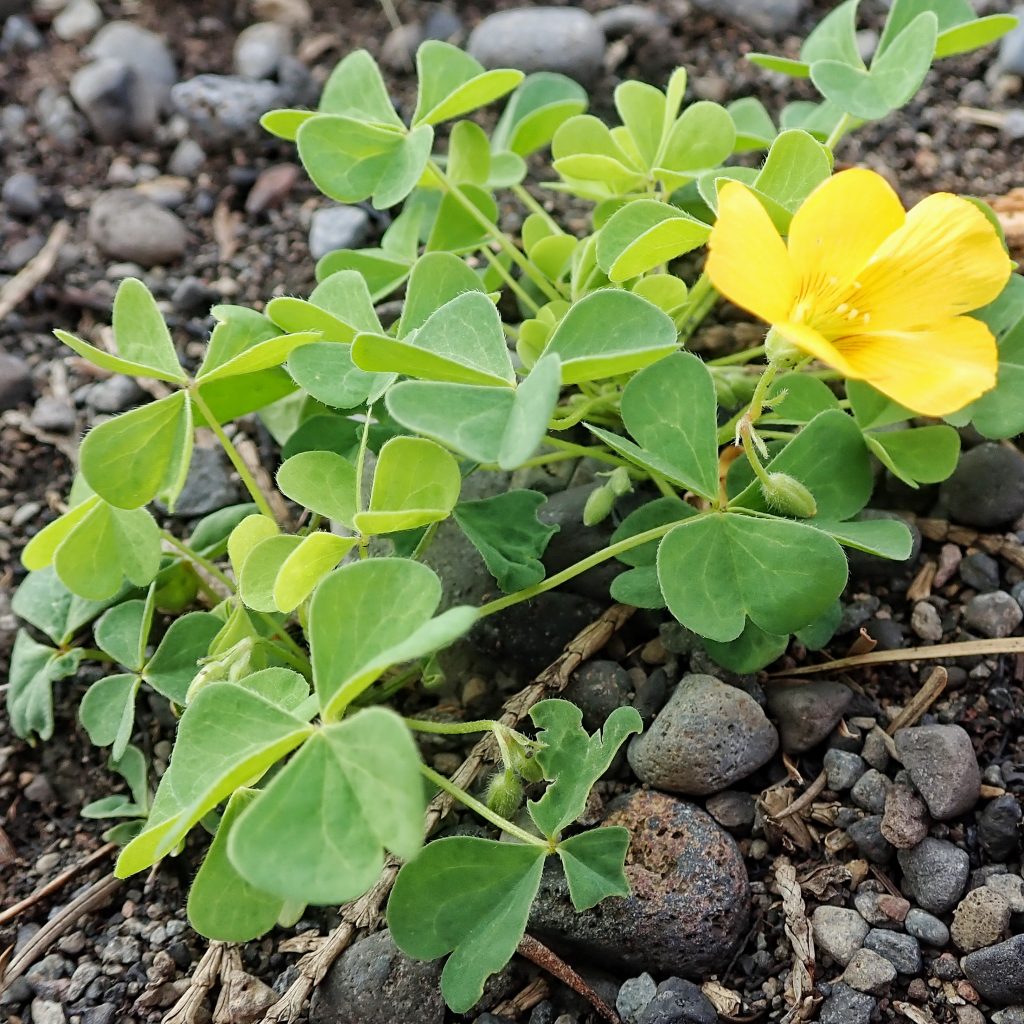
https://www.pnwflowers.com/flower/oxalis-suksdorfii
http://beta.floranorthamerica.org/Oxalis_suksdorfii
https://bsapubs.onlinelibrary.wiley.com/doi/abs/10.1002/j.1537-2197.1964.tb06635.x
https://en.m.wikipedia.org/wiki/Heterostyly
https://www.dnr.wa.gov/publications/amp_nh_oxsu.pdf
https://en.m.wikipedia.org/wiki/Wilhelm_Nikolaus_Suksdorf
https://www.wnps.org/blog/who-was-wilhelm-suksdorf?format=amp
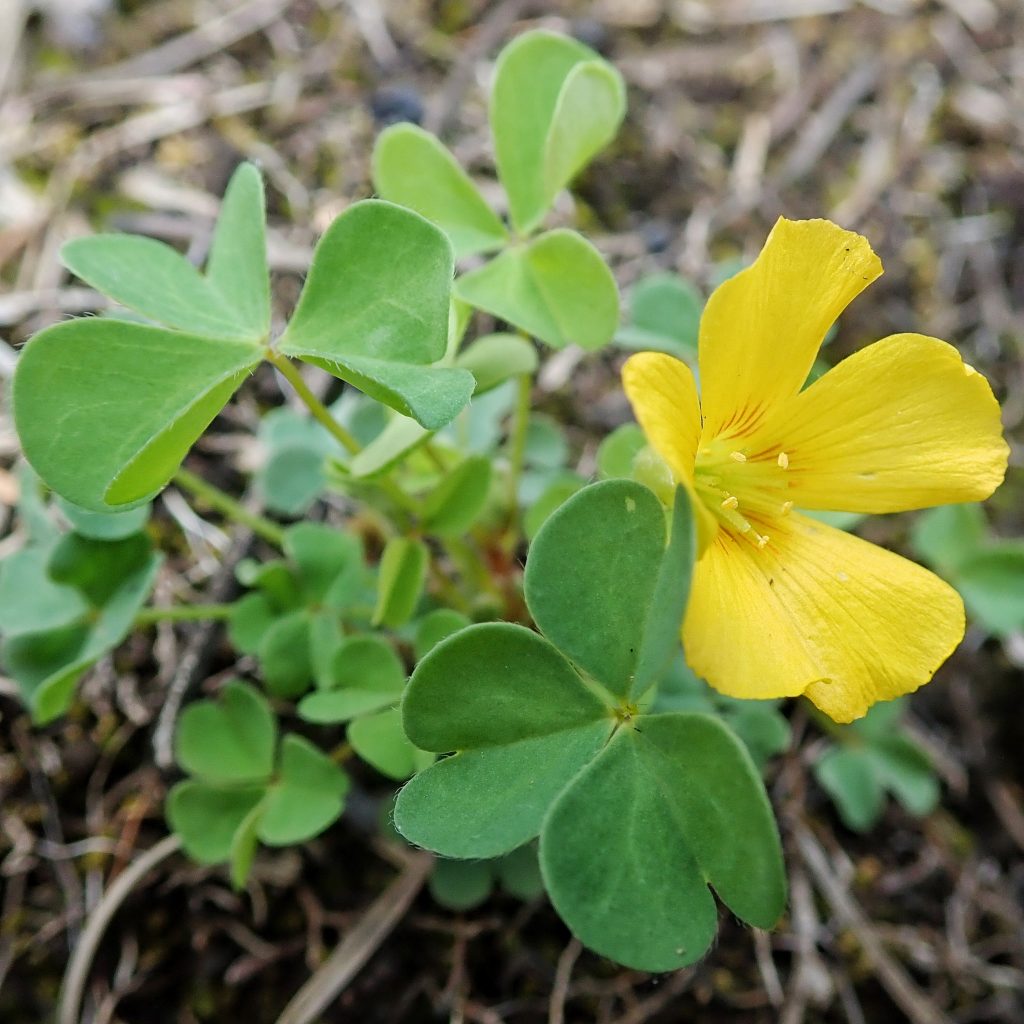
Such a pretty plant! Too bad there aren’t more of them. Great job! 👍
Thanks Love!